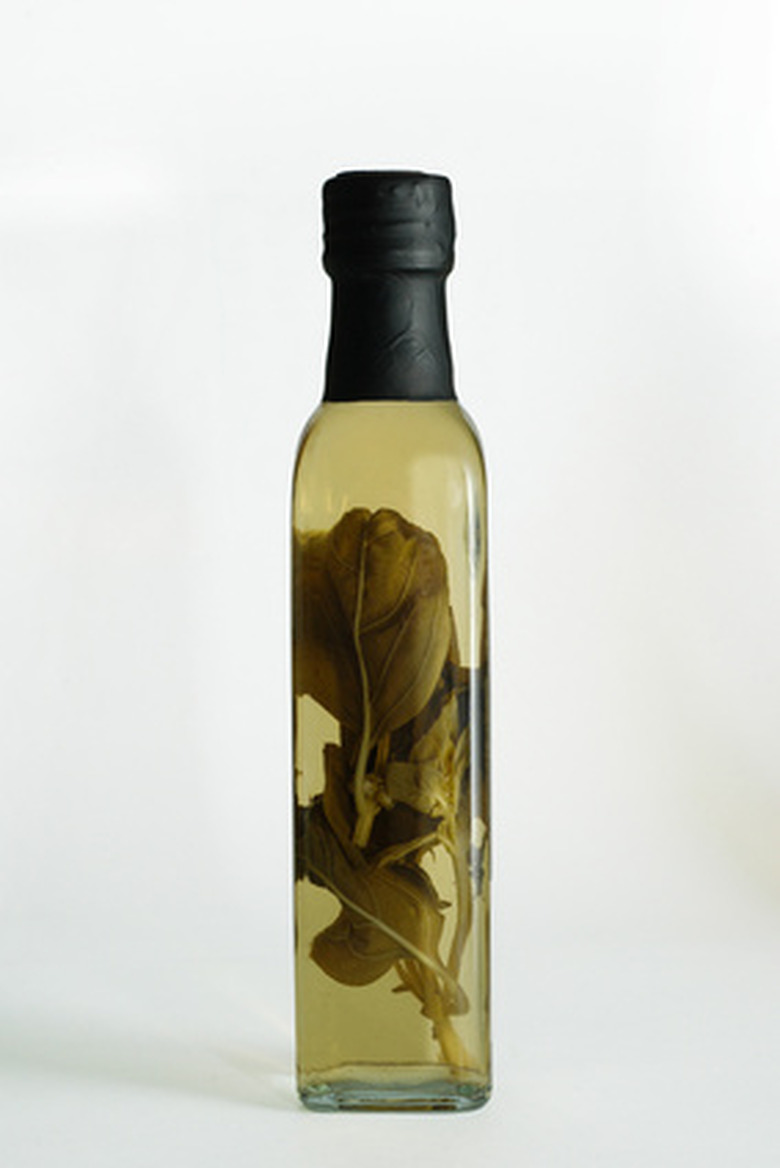How To Determine The Concentration Of A Titration
Chemists use titration as a method of quantitative analysis; that is, the method allows the exact quantity of a compound to be determined. Fundamentally, titration involves the combination of two chemicals that react and a means of monitoring the progress of the reaction so that the operator knows when it is complete. One of the chemicals is loaded into a buret (a piece of glassware that allows very precise measurements of volume); this compound is the "titrant." The other compound is placed in a flask or beaker and is called the "analyte" or the "sample."
Generally, the exact concentration of the analyte must be known to achieve accurate results. The concentrations are usually expressed in units of moles per liter (mol/L). After the titration has been carried out, the concentration of the titrant, information from the balanced chemical reaction between the titrant and analyte, and the exact amount of analyte being titrated are used to determine the exact concentration of the analyte.
Step 1
Write the balanced chemical equation for the reaction that is taking place between the titrant and analyte. This necessarily requires knowledge of the identity of the titrant and analyte. A common experiment in high-school and college chemistry labs is the titration of acetic acid (CH?COOH, the analyte) in a sample of vinegar with sodium hydroxide (NaOH, the titrant) (See References 2). This is a common acid-base reaction:
1 CH?COOH + 1 NaOH ? 1 CH?COONa + 1 H?O
The coefficients (i.e., the numbers to the left of each chemical) establish the molar ratio of the reactants. In this case, the molar ratio is 1:1.
Step 2
Convert the volume of titrant necessary to reach the end point (i.e., the point where all of the analyte has been consumed and the volume reading has been taken from the buret) from milliliters (mL) to liters (L) by dividing by 1000. For example, if 39.75 mL of NaOH was required to reach the end point, then
39.75 mL / (1000 mL/L) = 0.03975 L of NaOH
Step 3
Use the liters of titrant necessary to reach the end point of the titration and the concentration of the titrant to determine the moles of titrant used in the process. The concentration of the NaOH was 0.1044 mol/L, then
0.03975 L NaOH x (0.1044 mol/L) = 0.004150 moles of NaOH
Step 4
Calculate the moles of analyte using the moles of titrant from step 3 and the molar ratio from step 1:
0.004150 mol NaOH x (1 mol CH?COOH / 1 mol NaOH) = 0.004150 mol CH?COOH
Step 5
Determine the concentration of the sample by dividing the moles of analyte by the volume of analyte in liters. In this case, this would represent the amount of vinegar placed in the flask or beaker before the titration was carried out. For the example used in steps 1 through 4, assuming that 5.00 mL of vinegar was placed in the flask for analysis, then 5.00 mL = 0.00500 L, and
(0.004150 mol CH?COOH) / (0.00500 L vinegar) = 0.830 mol/L
Thus, the concentration of the acetic acid in the vinegar is 0.830 mol/L.
Things Needed
- Calculator
- Data from titration experiment
References
Cite This Article
MLA
Brubaker, Jack. "How To Determine The Concentration Of A Titration" sciencing.com, https://www.sciencing.com/determine-concentration-titration-6391245/. 24 April 2017.
APA
Brubaker, Jack. (2017, April 24). How To Determine The Concentration Of A Titration. sciencing.com. Retrieved from https://www.sciencing.com/determine-concentration-titration-6391245/
Chicago
Brubaker, Jack. How To Determine The Concentration Of A Titration last modified August 30, 2022. https://www.sciencing.com/determine-concentration-titration-6391245/
